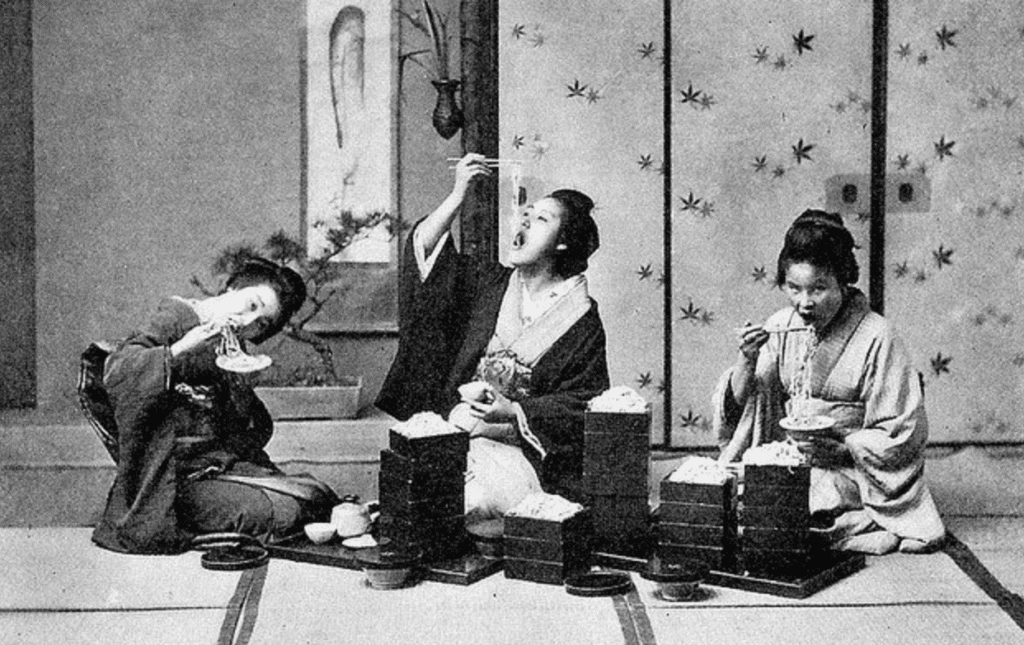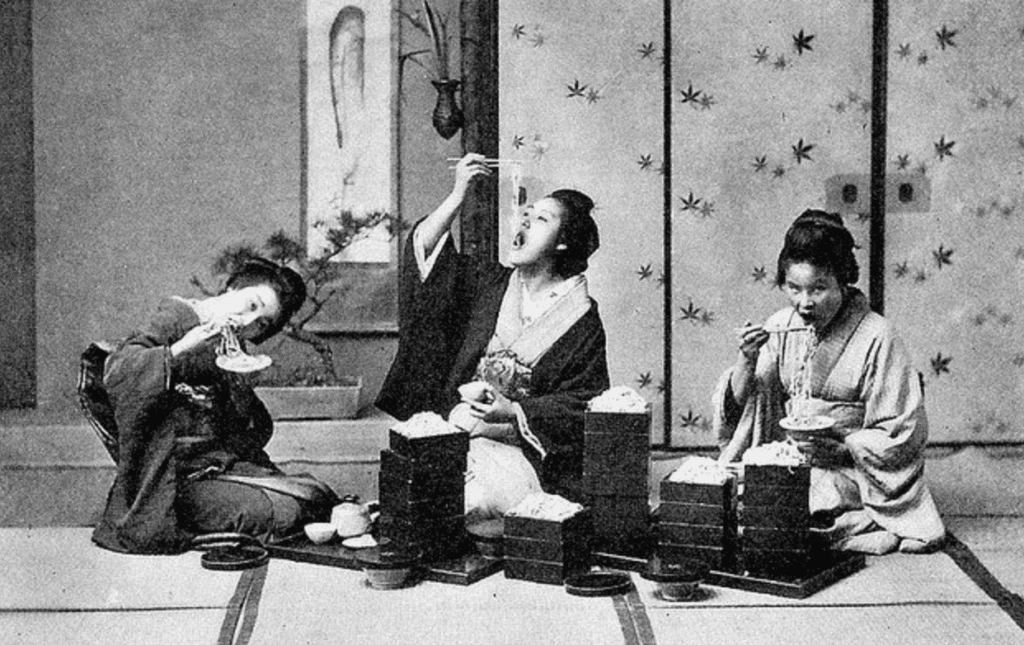Ramen During World War II
During World War II, ramen became even more popular in Japan as a cheap and filling meal for soldiers and civilians alike. After the war, cheap and convenient instant ramen noodles were introduced, making the dish even more accessible to the general public.
In the decades that followed, ramen continued to evolve and gain popularity both within Japan and internationally. This period was crucial in ramen history, as the dish transformed from its Chinese immigrant ramen origin into something uniquely Japanese. In the 1950s, a new type of ramen called "shina soba" (literally "Chinese noodles") emerged, which was made with thicker, curly noodles and a more flavorful broth. In the 1960s, new styles of ramen such as tonkotsu (pork bone) and miso ramen were introduced, further expanding the dish's popularity.

Today, ramen is enjoyed not only in Japan but also around the world, with many international variations and interpretations of the dish. It has become a cultural phenomenon, with entire restaurants and even museum exhibitions dedicated to the history and art of making ramen.

The Birth of Instant Ramen (1958)
In addition to understanding where ramen came from, the history of instant ramen is also interesting and significant. Instant ramen was first introduced in Japan in 1958 by Momofuku Ando, the founder of the company Nissin. Ando was inspired to create instant ramen after seeing people in post-war Japan struggling to afford a hot meal, and wanted to create a convenient and affordable option for
them. When people ask "where is ramen from" in its instant form, the answer is purely Japanese innovation.
Instant ramen is different from authentic, handmade ramen in several ways. One major difference is the ingredients used. Authentic ramen typically uses high quality, fresh ingredients, including wheat flour for the noodles and a variety of meats and vegetables for the broth and toppings. In contrast, instant ramen often uses lower-quality ingredients and preservatives to extend its shelf life.
Another difference is the method of preparation. Authentic ramen is typically made from scratch, with the broth and noodles prepared separately and then combined in a bowl. Instant ramen, on the other hand, is pre-cooked and then dehydrated, with the broth and noodles packaged together in a single serving. To prepare instant ramen, the noodles and broth are rehydrated by adding hot water, making the dish quick and easy to prepare.
Global Popularity of Instant Ramen
Despite these differences, instant ramen has become incredibly popular around the world, particularly among people looking for a convenient and affordable meal option. In fact, it has become so popular that it has spawned an entire subculture, with fans experimenting with different ways to prepare and enjoy instant ramen, from adding additional ingredients to making creative recipes with it.
In conclusion, the history of ramen is a rich and fascinating one, with roots in China and evolution in Japan. From its humble beginnings as a filling meal, it has become a beloved dish enjoyed by people all over the world.
To learn more read “The Untold History of Ramen” by George Solt.
Contact us today!





